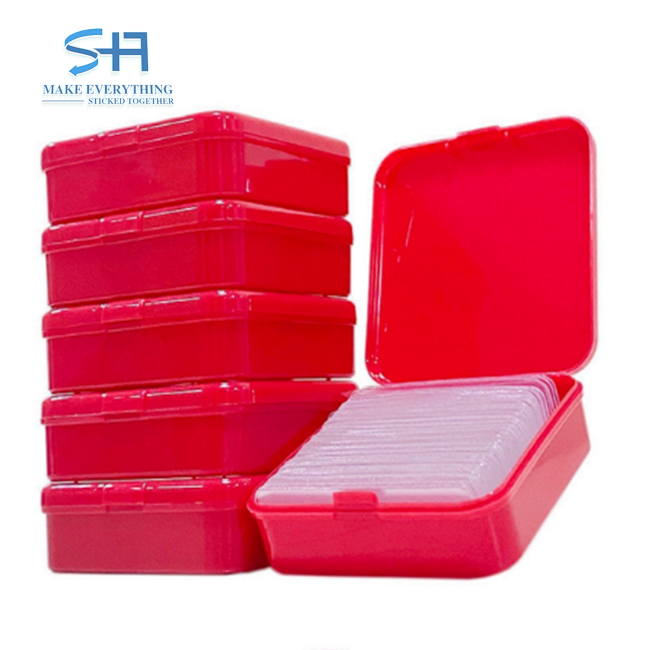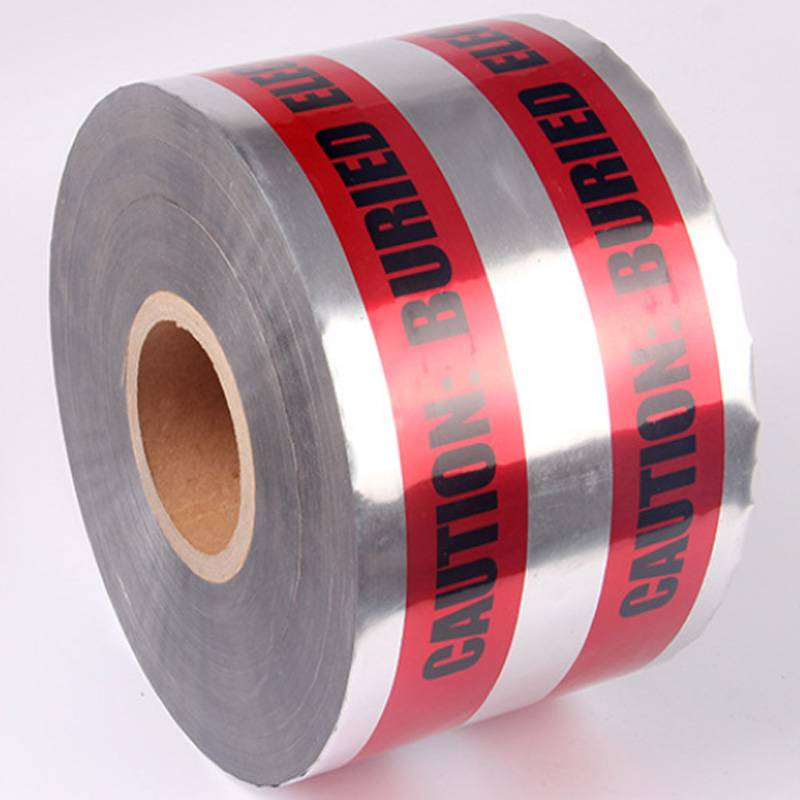Hot-selling Duct Tape Ac - Duct Tape – Newera
Hot-selling Duct Tape Ac - Duct Tape – Newera Detail:
| Items | features and usage | Code | physical indicator | |||||||
| Adhesive | Mesh | Backing | thicknessmm | Tensile strength N/cm | Elongation% | 180°peel force N/cm | tack # | |||
| Duct Tape | take the cloth laminated with PE film as the backing material,strong adhesion,anti-pull,anti-grease,aniti-aging,waterproof,anti-corrosion and high insulating.used for carton sealing,carpet stitch,heavy bunding and waterproof packaging. | BJ-HMG | hot melt glue | 27,35,44,50,70,90 | cloth laminated with PE film | 0.22-0.28 | 70 | 15 | 4 | 18 |
| BJ-RBR | rubber glue | 27,35,44,50,70,90 | cloth laminated with PE film | 0.22-0.28 | 70 | 15 | 4 | 8 | ||
| BI-SVT | solvent glue | 27,35,44,50,70,90 | cloth laminated with PE film | 0.22-0.28 | 70 | 15 | 4 | 8 | ||
| Printed Duct Tape | take the cloth laminated with PE film as the backing material,strong adhesion,anti-pull,anti-grease,aniti-aging,waterproof,anti-corrosion and high insulating.used for carton sealing,carpet stitch,heavy bunding and waterproof packaging. | hot melt glue | 70 | cloth laminated with PE film | 0.22-0.28 | 70 | 15 | 3 | 8 | |
| rubber glue | 70 | cloth laminated with PE film | 0.22-0.28 | 70 | 15 | 3 | 8 | |||
| solvent glue | 70 | cloth laminated with PE film | 0.22-0.28 | 70 | 15 | 3 | 8 | |||
Product Detail:
Duct tape is a kind of high adhesive tape with strong peel force,tensile strength, grease resistance,aging resistance and corrosion resistance.
Application :
It is mainly used for carton sealing,carpet stitching,heavy-duty strapping and so on.At present,it is also frequently used in car,chassis and cabinet.
History
The first material called “duck tape” was long strips of plain cotton duck cloth used in making shoes stronger, for decoration on clothing, and for wrapping steel cables or electrical conductors to protect them from corrosion or wear. For instance, in 1902, steel cables supporting the Manhattan Bridge were first covered in linseed oil then wrapped in duck tape before being laid in place. In the 1910s, certain boots and shoes used canvas duck fabric for the upper or for the insole, and duck tape was sometimes sewn in for reinforcement. In 1936, the US-based Insulated Power Cables Engineers Association specified a wrapping of duck tape as one of many methods used to protect rubber-insulated power cables. In 1942, Gimbel’s department store offered venetian blinds that were held together with vertical strips of duck tape. All of these foregoing uses were for plain cotton or linen tape that came without a layer of applied adhesive.
Adhesive tapes of various sorts were in use by the 1910s, including rolls of cloth tape with adhesive coating one side. White adhesive tape made of cloth soaked in rubber and zinc oxide was used in hospitals to bind wounds, but other tapes such as friction tape or electrical tape could be substituted in an emergency. In 1930, the magazine Popular Mechanics described how to make adhesive tape at home using plain cloth tape soaked in a heated liquid mixture of rosin and rubber from inner tubes.
In 1923, Richard Gurley Drew working for 3M invented masking tape, a paper-based tape with a mildly sticky adhesive. In 1925 this became the Scotch brand masking tape. In 1930, Drew developed a transparent tape based on cellophane, called Scotch Tape. This tape was widely used beginning in the Great Depression to repair household items. Author Scott Berkun has written that duct tape is “arguably” a modification of this early success by 3M. However, neither of Drew’s inventions was based on cloth tape.
The idea for what became duct tape came from Vesta Stoudt, an ordnance-factory worker and mother of two Navy sailors, who worried that problems with ammunition box seals would cost soldiers precious time in battle. She wrote to President Franklin D. Roosevelt in 1943 with the idea to seal the boxes with a fabric tape, which she had tested at her factory. The letter was forwarded to the War Production Board, who put Johnson & Johnson on the job. The Revolite division of Johnson & Johnson had made medical adhesive tapes from duck cloth from 1927 and a team headed by Revolite’s Johnny Denoye and Johnson & Johnson’s Bill Gross developed the new adhesive tape,designed to be ripped by hand, not cut with scissors.
Their new unnamed product was made of thin cotton duck coated in waterproof polyethylene (plastic) with a layer of rubber-based gray adhesive (branded as “Polycoat”) bonded to one side. It was easy to apply and remove, and was soon adapted to repair military equipment quickly, including vehicles and weapons. This tape, colored in army-standard matte olive drab, was widely used by the soldiers. After the war, the duck tape product was sold in hardware stores for household repairs. The Melvin A. Anderson Company of Cleveland, Ohio, acquired the rights to the tape in 1950. It was commonly used in construction to wrap air ducts. Following this application, the name “duct tape” came into use in the 1950s, along with tape products that were colored silvery gray like tin ductwork. Specialized heat- and cold-resistant tapes were developed for heating and air-conditioning ducts. By 1960 a St. Louis, Missouri, HVAC company, Albert Arno, Inc., trademarked the name “Ductape” for their “flame-resistant” duct tape, capable of holding together at 350–400 °F (177–204 °C).
In 1971, Jack Kahl bought the Anderson firm and renamed it Manco.] In 1975, Kahl rebranded the duct tape made by his company. Because the previously used generic term “duck tape” had fallen out of use,[failed verification] he was able to trademark the brand “Duck Tape” and market his product complete with a yellow cartoon duck logo. Manco chose the “Duck” name as “a play on the fact that people often refer to duct tape as ‘duck tape’”, and as a marketing differentiation to stand out against other sellers of duct tape. In 1979, the Duck Tape marketing plan involved sending out greeting cards with the duck branding, four times a year, to 32,000 hardware managers. This mass of communication combined with colorful, convenient packaging helped Duck Tape become popular. From a near-zero customer base Manco eventually controlled 40% of the duct tape market in the US.] Acquired by Henkel in 1998, in 2009, Duck Tape was sold to Shurtape Technologies, which is owned by the Shuford family of North Carolina. Duck is not Shurtape’s only brand of duct tape; their high-end offering is called “T-Rex Tape.” “Ultimate Duck”, which had been Henkel’s top of the line variety, is still sold in the United Kingdom.Ultimate Duck, T-Rex Tape, and the competing Gorilla Tape all advertise “three-layer technology”.
After profiting from Scotch Tape in the 1930s, 3M produced military materiel during WWII, and by 1946 had developed the first practical vinyl electrical tape. By 1977, the company was selling a heat-resistant duct tape for heating ducts. In the late 1990s, 3M tape division had an annual turnover of $300 million, the US industry leader. In 2004, 3M invented a transparent duct tape.
Manufacture
Modern duct tape is made with any one of a variety of woven fabrics to provide strength. The threads or fill yarn of the fabric may be cotton, polyester, nylon, rayon or fiberglass. The fabric is a very thin gauze called “scrim” which is laminated to a backing of low-density polyethylene (LDPE). The color of the LDPE is provided by various pigments; the usual gray color comes from powdered aluminum mixed into the LDPE. There are two commonly produced tape widths: 1.9 in (48 mm) and 2 in (51 mm). Other widths are also offered. The largest commercial rolls of duct tape were made in 2005 for Henkel, with 3.78 inches (9.6 cm) width, a roll diameter of 64 inches (160 cm) and weighing 650 pounds (290 kg).
Common uses
Duct tape is commonly used in situations that require a strong, flexible, and very sticky tape. Some have a long-lasting adhesive and resistance to weathering.
A specialized version, gaffer tape, which does not leave a sticky residue when removed, is preferred by gaffers in the theatre, motion picture and television industries.
Duct tape, in its guise as “racer’s tape”, “race tape” or “100 mile an hour tape” has been used in motorsports for more than 40 years to repair fiberglass bodywork (among other uses). Racer’s tape comes in a wide range of colors to help match it to common paint colors. In the UK, it is usually referred to as “tank tape” in motorsports use.
Usage on ductwork
The product now commonly called duct tape should not be confused with special tapes actually designed for sealing heating and ventilation (HVAC) ducts, though these tapes may also be called “duct tapes.” To provide laboratory data about which sealants and tapes last, and which are likely to fail, research was conducted at Lawrence Berkeley National Laboratory, Environmental Energy Technologies Division. Their major conclusion was that one should not use duct tape to seal ducts (they had defined duct tape as any fabric-based tape with rubber adhesive). The testing done shows that under challenging but realistic conditions, duct tapes become brittle and may fail quickly, at times becoming leaky or falling off completely.
Common duct tape carries no safety certifications such as UL or Proposition 65, which means the tape may burn violently, producing toxic smoke; it may cause ingestion and contact toxicity; it can have irregular mechanical strength; and its adhesive may have low life expectancy. Its use in ducts has been prohibited by the state of California and by building codes in many other places.
Usage in spaceflight
According to NASA engineer Jerry Woodfill, a 52-year NASA veteran, duct tape had been stowed on board every mission since early in the Gemini program.
NASA engineers and astronauts have used duct tape in the course of their work, including in some emergency situations. One such usage occurred in 1970 when Woodfill was working in Mission Control, when the square carbon dioxide filters from Apollo 13′s failed command module had to be modified to fit round receptacles in the lunar module, which was being used as a lifeboat after an explosion en route to the moon. A workaround used duct tape and other items on board Apollo 13, with the ground crew relaying instructions to the flight crew. The lunar module’s CO2 scrubbers started working again, saving the lives of the three astronauts on board.
Ed Smylie, who designed the scrubber modification in just two days, said later that he knew the problem was solvable when it was confirmed that duct tape was on the spacecraft: “I felt like we were home free,” he said in 2005. “One thing a Southern boy will never say is, ‘I don’t think duct tape will fix it.’”
Duct tape, referred to as “…good old-fashioned American gray tape…” was used by the Apollo 17 astronauts on the moon to improvise a repair to a damaged fender on the lunar rover, preventing possible damage from the spray of lunar dust as they drove.
Military usage
In the US submarine fleet, an adhesive cloth tape is called “EB Green,” as the duct tape used by Electric Boat was green. It is also called “duck tape”, “riggers’ tape”, “hurricane tape”, or “100-mph tape”—a name that comes from the use of a specific variety of duct tape that was supposed to withstand up to 100 mph (160 km/h; 87 kn) winds. The tape is so named because it was used during the Vietnam War to repair or balance helicopter rotor blades.
Alternative uses
Duct tape’s widespread popularity and multitude of uses has earned it a strong place in popular culture, and has inspired a vast number of creative and imaginative applications.
Duct tape occlusion therapy (DTOT) is a method intended to treat warts by covering them with duct tape for an extended period. The evidence for its effectiveness is poor; thus it is not recommended as routine treatment. However, other studies suggest the duct tape treatment is more effective than existing medical options. Duct tape is often used in shoe repair due to its resiliency.
Duct tape has been used to temporarily fix Apple’s iPhone 4 dropped call issue, as an alternative to Apple’s own rubber case.
In popular culture
The Duct Tape Guys (Jim Berg and Tim Nyberg) have written seven books about duct tape, as of 2005. Their bestselling books have sold over 1.5 million copies and feature real and unusual uses of duct tape. In 1994 they coined the phrase “it ain’t broke, it just lacks duct tape”. Added to that phrase in 1995 with the publication of their book about lubricant WD-40 book was, “Two rules get you through life: If it’s stuck and it’s not supposed to be, WD-40 it. If it’s not stuck and it’s supposed to be, duct tape it”. Their website features thousands of duct tape uses from people around the world ranging from fashions to auto repair. The combination of WD-40 and duct tape is sometimes referred to as “the redneck repair kit”.
The Canadian sitcom The Red Green Show’s title character often used duct tape (which he dubbed “the handyman’s secret weapon”) as both a shortcut to proper fastening as well as for unconventional uses. The series sometimes showcased fan duct tape creations. The series had a feature film based on it entitled Duct Tape Forever and several VHS/DVD compilations of the show’s use of the tape have been released. Since 2000, series star Steve Smith (as “Red Green”) has been the “Ambassador of Scotch Duct Tape” for 3M.
The Discovery Channel series MythBusters featured duct tape in a number of myths that involve non-traditional uses. Confirmed myths include suspending a car for a period of time, building a functional cannon, a two-person sailboat, a two-person canoe (with duct tape paddles), a two-person raft, Roman sandals, a chess set, a leak proof water canister, rope, a hammock that can support the weight of an adult male, holding a car in place, a bridge that spanned the width of a dry dock, and a full-scale functional trebuchet with duct tape as the only binder. In the episode “Duct Tape Plane”, the MythBusters repaired (and eventually replaced) the skin of a lightweight airplane with duct tape and flew it a few meters above a runway.
Garrison Keillor’s radio show A Prairie Home Companion includes comedic fictional commercials sponsored by the “American Duct Tape Council”.
Product detail pictures:
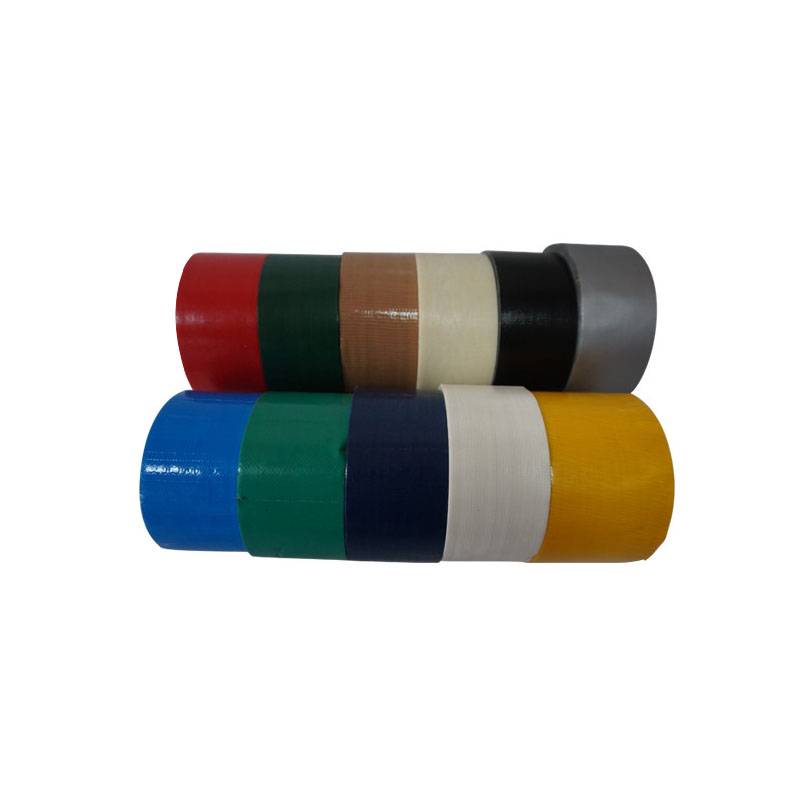
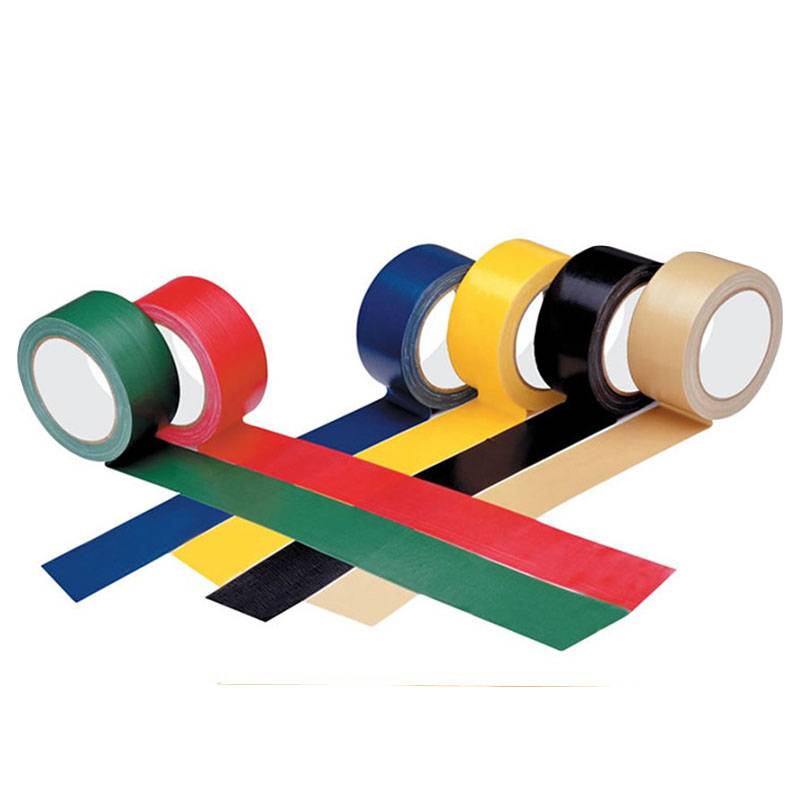
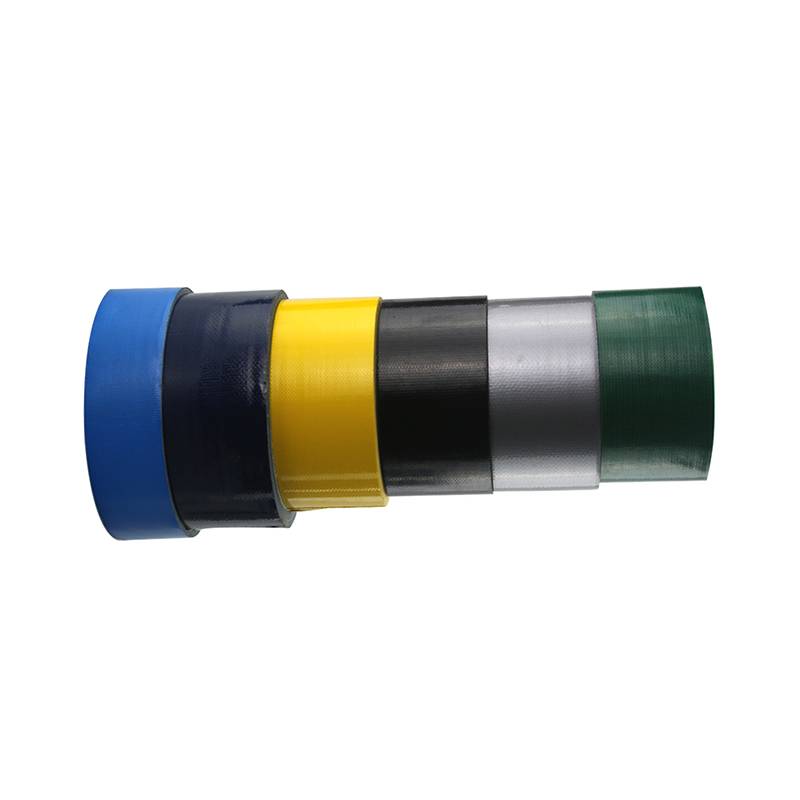
Related Product Guide:
Demystify! The hidden corners of the die cutting industry
Recently, the price of raw materials has risen sharply, and the plastic market has started a collective carnival mode.
continue on to further improve, to make sure product top quality in line with market and consumer standard requirements. Our firm has a excellent assurance program have already been established for Hot-selling Duct Tape Ac - Duct Tape – Newera , The product will supply to all over the world, such as: Bulgaria, Swaziland, Qatar, Now, with the development of internet, and the trend of internationalization, we've got decided to extend business to overseas market. With the propose of bringing more profits to oversea customers by providing directly abroad. So we have changed our mind, from home to abroad, hope to give our customers more profit, and looking forward to more chance to make business.
We are really happy to find such a manufacturer that ensuring product quality at the same time the price is very cheap.







